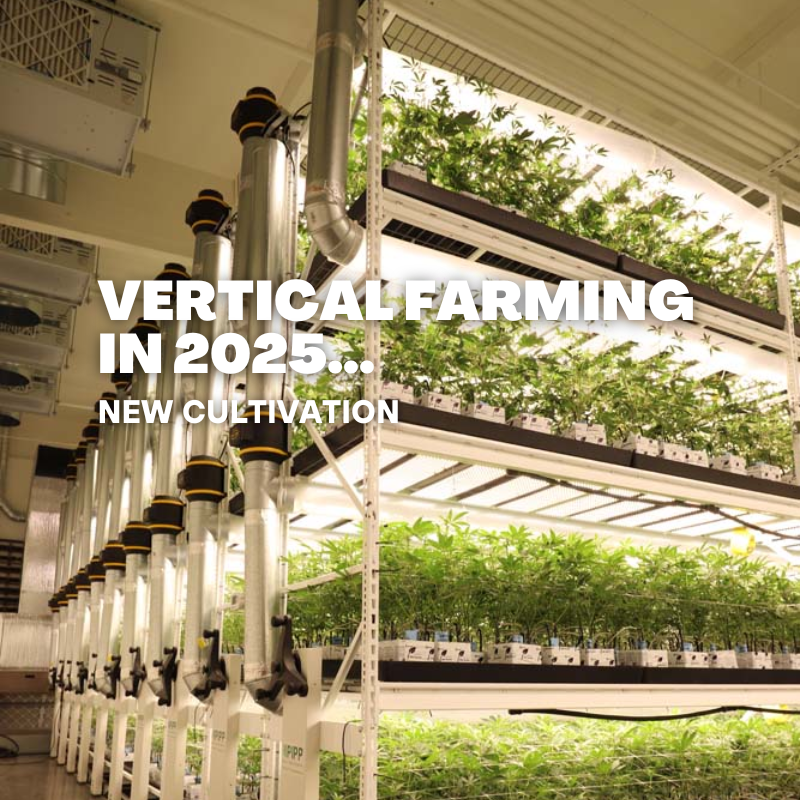Trends, Innovations, and Sustainability in 2025
The cannabis industry is evolving faster than ever, and one of the most exciting areas of growth is in cultivation. From advanced agricultural technology to sustainable farming practices, cannabis cultivation is entering a new era in 2025. In this blog, we’ll dive into the latest trends, breakthroughs, and techniques in cannabis and hemp farming.
1. The Rise of Sustainable Cannabis Farming Practices
Sustainability is at the forefront of cannabis cultivation in 2025. As demand for both cannabis and hemp products increases, the industry is leaning into eco-friendly practices to reduce environmental impact. Here are some key sustainable trends we’re seeing:
- Water Conservation: Traditional cannabis farming requires a lot of water, but growers are now turning to hydroponic systems and other water-efficient technologies to reduce waste. Techniques like aeroponics and aquaponics are becoming more mainstream, allowing cultivators to grow high-quality crops while minimizing their water consumption.
- Energy-Efficient Grow Lights: LED technology continues to evolve, offering even more energy-efficient lighting for indoor cannabis farming. By using full-spectrum LED lights, cultivators can significantly reduce their energy bills while maintaining optimal growing conditions for their plants.
- Regenerative Agriculture: Some cannabis farms are adopting regenerative practices, such as crop rotation, no-till farming, and cover cropping. These methods help improve soil health and biodiversity, promoting long-term sustainability.
2. Advances in Cannabis Genetics and Breeding
As cannabis consumption grows, so does the need for unique, high-quality strains. Advances in cannabis genetics are allowing breeders to create strains that meet specific market demands, from higher THC content to increased CBD levels for medicinal use. The rise of genetic testing tools allows cultivators to track and optimize their crops more effectively.
- CBD-Dominant Strains: With hemp-derived CBD products in high demand for wellness and medicinal purposes, cultivators are focusing on strains with higher CBD content and lower THC levels. Genetic breeding is allowing for faster and more reliable production of these strains.
- Low-THC Hemp Varieties: The development of low-THC hemp strains is helping farmers tap into the growing market for hemp-based products, like textiles, biodegradable plastics, and health supplements. These strains are perfect for non-intoxicating products, opening new opportunities for farmers.
3. Technology and Automation in Cannabis Cultivation
The integration of technology into cannabis farming is revolutionizing the industry. Growers are using cutting-edge tools to monitor their crops and streamline operations:
- AI and Machine Learning: Artificial intelligence (AI) is being used to analyze growing conditions, predict crop yields, and optimize harvest times. Machine learning algorithms help farmers make data-driven decisions that improve the quality and quantity of their harvests.
- Automated Cultivation Systems: From automated irrigation systems to climate-controlled grow rooms, automation is making cannabis farming more efficient. By reducing labor costs and improving consistency, automated systems allow cultivators to focus on the craft of growing high-quality cannabis.
4. Vertical Farming: Maximizing Space for Cannabis Cultivation
As urbanization continues, vertical farming is becoming a key solution for maximizing space in cannabis cultivation. These multi-story growing systems make it possible to cultivate cannabis in tight urban spaces, reducing the need for large outdoor farms. By stacking plants on top of each other and using controlled environments, vertical farms can increase crop yields per square foot while reducing environmental impact.
- Benefits of Vertical Farming: Vertical farming provides better space utilization, reduces pesticide use, and enables year-round growing, making it a sustainable option for cultivators in densely populated areas.
- Tech-Integrated Vertical Farms: Many vertical cannabis farms are using integrated technologies, like LED lighting, hydroponics, and climate controls, to optimize growing conditions for each tier of the farm.
5. Organic Cannabis Farming: A Return to Natural Roots
As consumers demand cleaner, chemical-free products, organic cannabis farming is seeing a resurgence. Many cultivators are moving away from synthetic fertilizers and pesticides in favor of natural alternatives.
- Biological Pest Control: Organic growers are using natural predators, like ladybugs or predatory mites, to keep harmful pests in check. This reduces the need for chemical pesticides, which can affect both the environment and the quality of the cannabis.
- Soil Health and Biodiversity: Organic cultivation also emphasizes soil health and biodiversity, which helps maintain long-term soil fertility and encourages healthy plant growth. This approach produces more robust and aromatic cannabis.
6. Indoor vs. Outdoor Cannabis Cultivation: What’s Better for 2025?
The debate between indoor and outdoor cultivation has been ongoing for years, but in 2025, both have distinct advantages depending on the type of cannabis being grown.
- Indoor Cultivation: Indoor farms provide complete control over environmental conditions like light, temperature, and humidity. This allows for year-round cultivation and is especially popular for premium, high-THC cannabis strains. However, indoor farming can be resource-intensive in terms of energy consumption.
- Outdoor Cultivation: Outdoor farms are typically more sustainable, benefiting from natural sunlight and reduced energy use. They are ideal for producing large quantities of hemp for industrial uses such as textiles, paper, and bioplastics. However, outdoor growing is dependent on climate conditions and can be subject to pests and weather fluctuations.
The Future of Cannabis Cultivation
The cannabis cultivation industry in 2025 is all about sustainability, innovation, and efficiency. From sustainable farming practices to advanced breeding techniques and the rise of automation, the industry is evolving rapidly to meet growing demand. Whether you’re a hemp farmer or a cannabis cultivator, embracing these trends and technologies will ensure you remain competitive in this booming market.
As the industry continues to expand, staying informed about the latest cultivation news is crucial for anyone involved in cannabis and hemp farming. For consumers, supporting sustainable and ethically produced cannabis products will contribute to a greener future for all.







